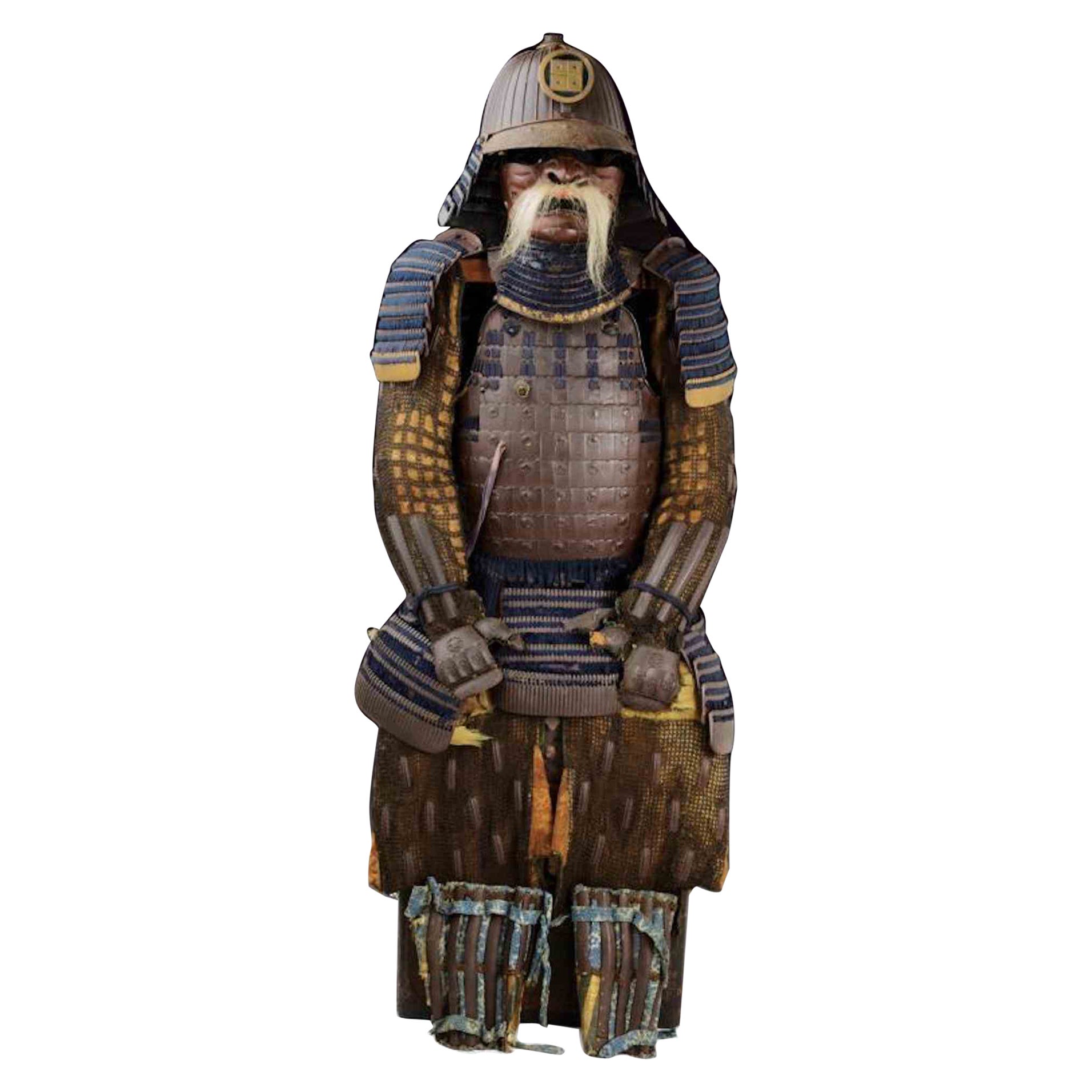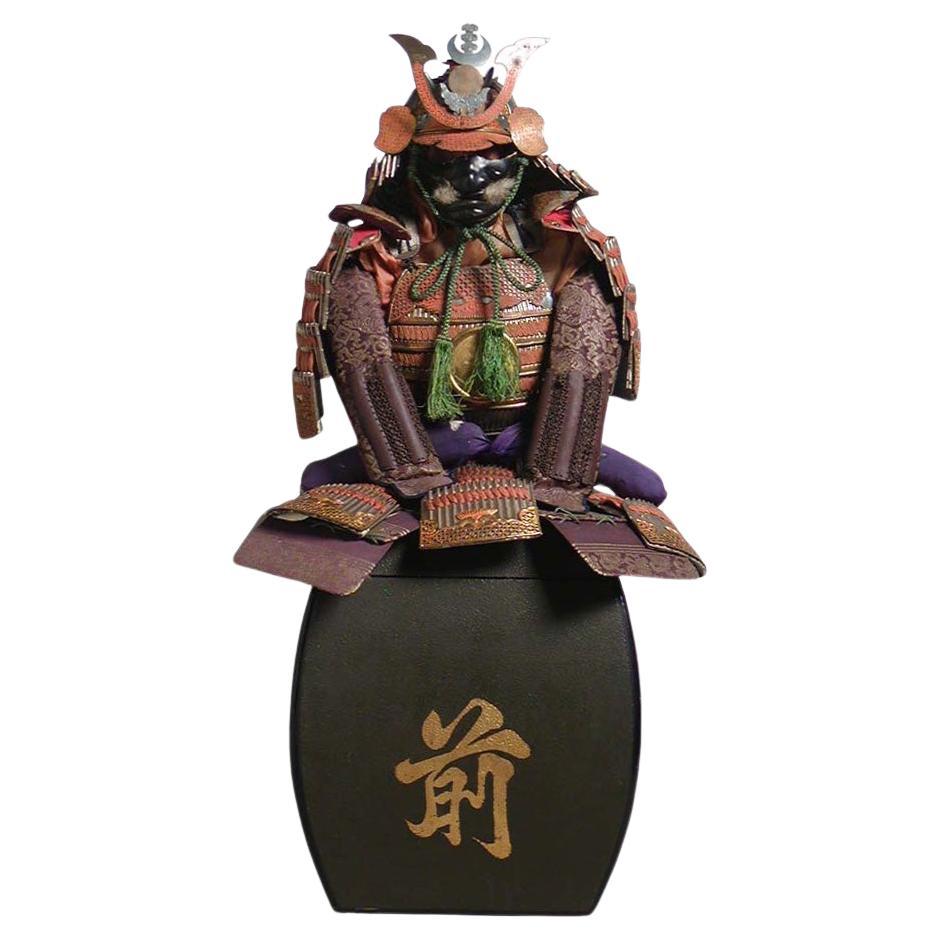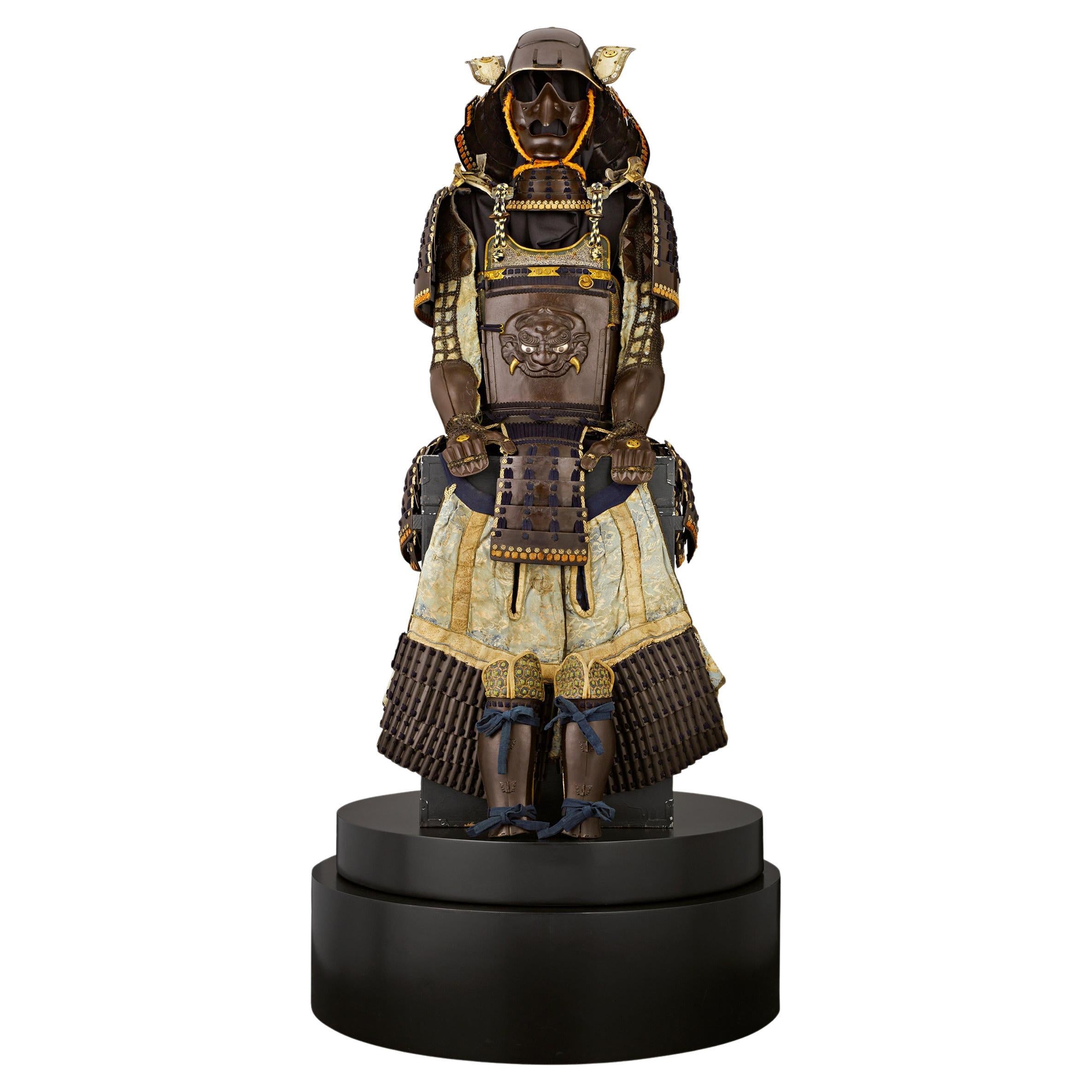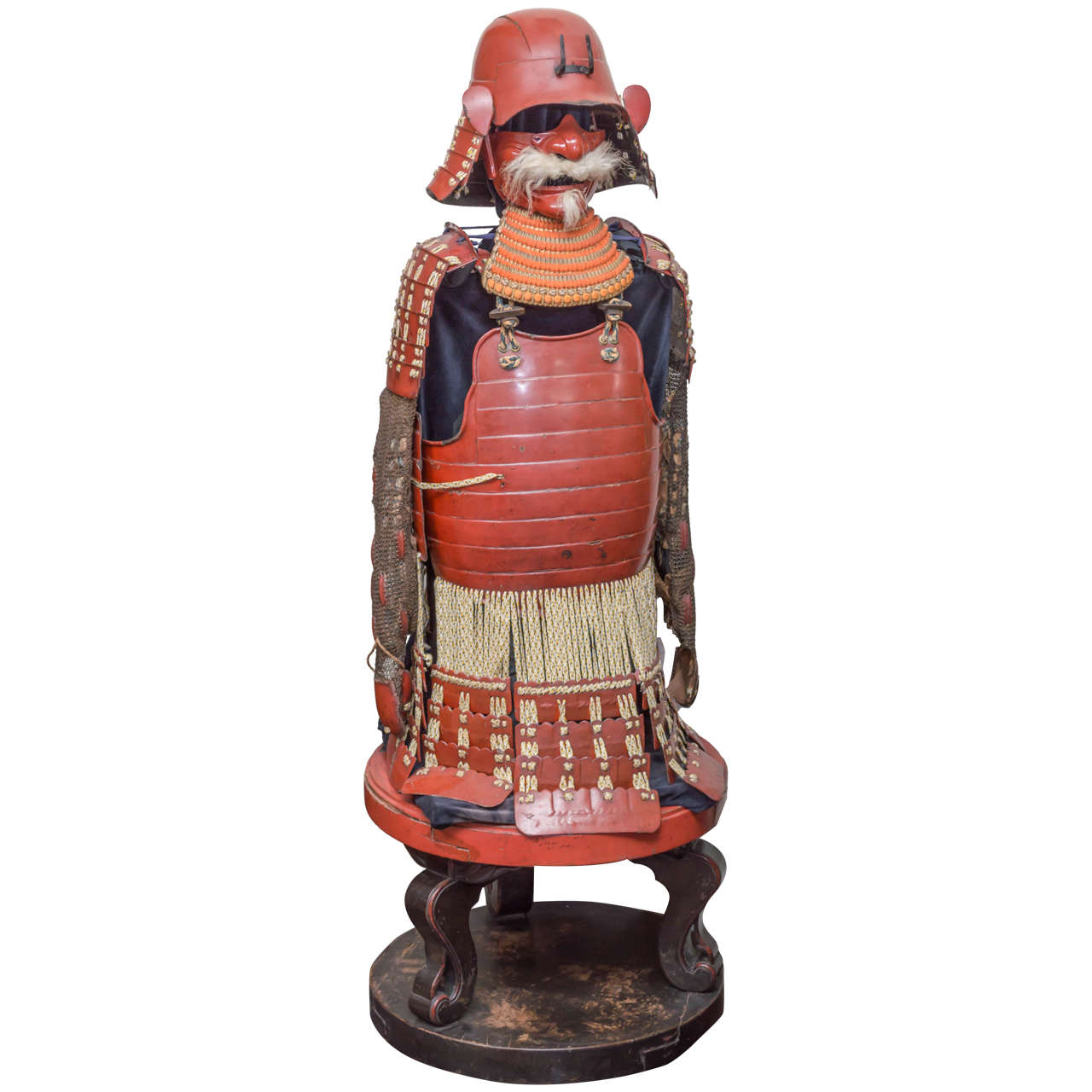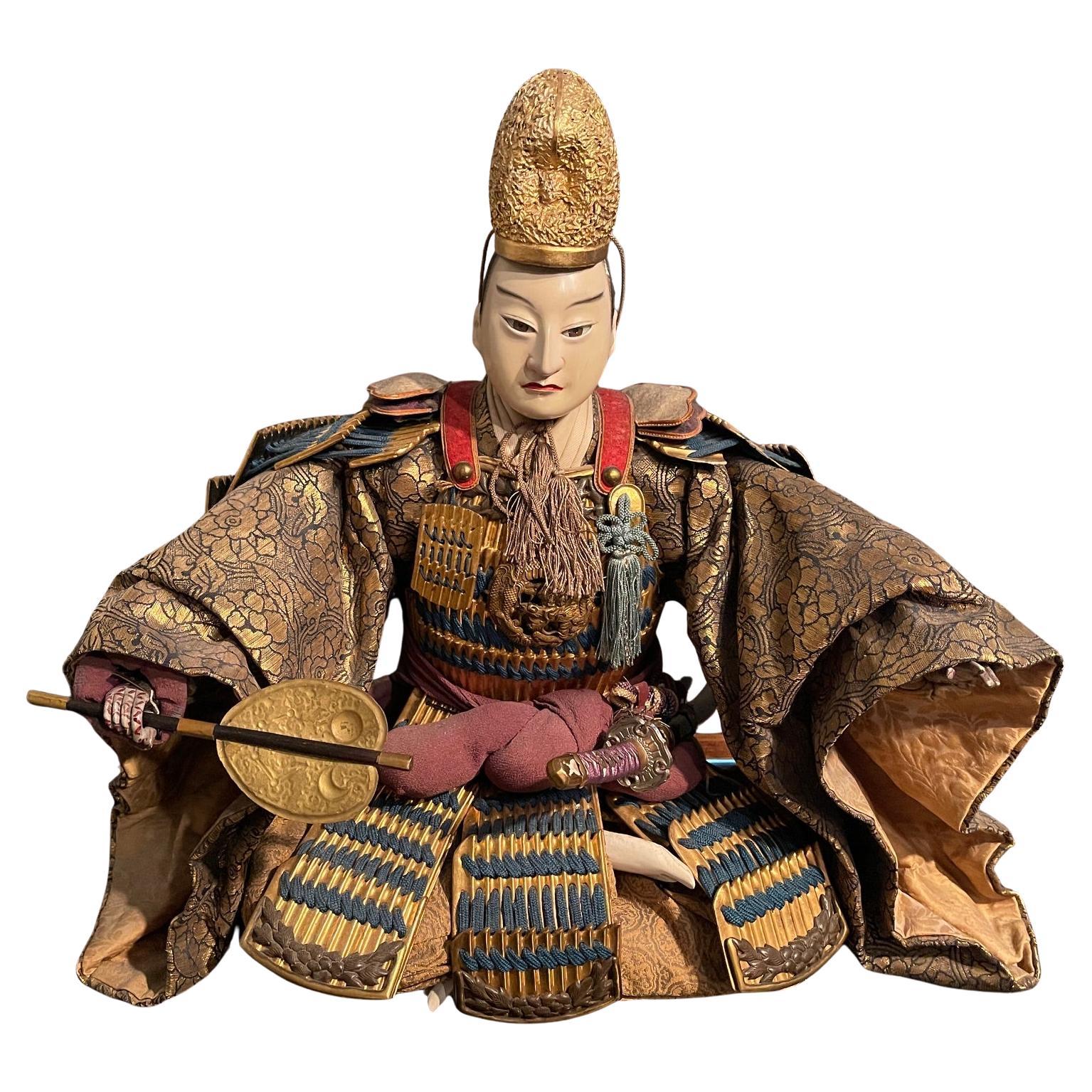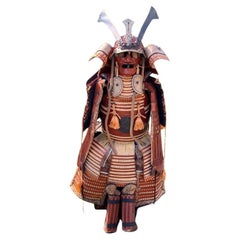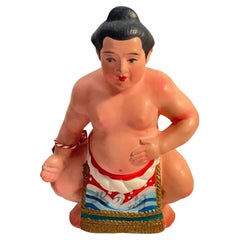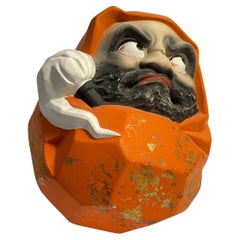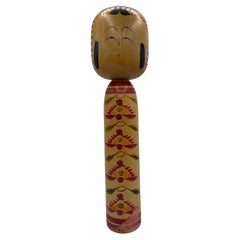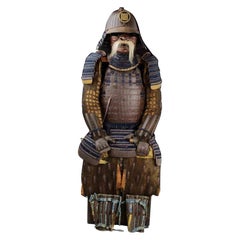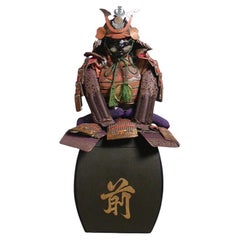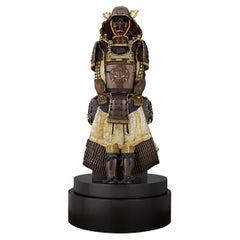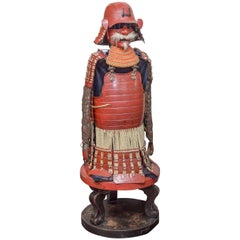Items Similar to Japanese Armor Clay Bell Yoroi Dorei from Ohyama Jinjya 1990s
Want more images or videos?
Request additional images or videos from the seller
1 of 7
Japanese Armor Clay Bell Yoroi Dorei from Ohyama Jinjya 1990s
$224.40
£168.94
€190
CA$309.13
A$346.20
CHF 180.64
MX$4,228.71
NOK 2,298.30
SEK 2,166.42
DKK 1,446.31
About the Item
A Yoroi Dorei is a traditional Japanese clay bell shaped like a suit of samurai armor. These bells are often handcrafted and painted with intricate detail, symbolizing strength, protection, and bravery. Originally used as charms or decorative items, Yoroi Dorei are believed to ward off evil spirits and bring good fortune. When shaken, the bell produces a soft, pleasant sound. They are popular as souvenirs, especially in regions with historical samurai culture.
- Dimensions:Height: 3.15 in (8 cm)Width: 2.37 in (6 cm)Depth: 1.97 in (5 cm)
- Style:Showa (In the Style Of)
- Materials and Techniques:
- Place of Origin:
- Period:1990-1999
- Date of Manufacture:1990
- Condition:
- Seller Location:Paris, FR
- Reference Number:1stDibs: LU6325246091752
About the Seller
5.0
Vetted Professional Seller
Every seller passes strict standards for authenticity and reliability
1stDibs seller since 2022
50 sales on 1stDibs
Typical response time: 6 hours
- ShippingRetrieving quote...Shipping from: Paris, France
- Return Policy
Authenticity Guarantee
In the unlikely event there’s an issue with an item’s authenticity, contact us within 1 year for a full refund. DetailsMoney-Back Guarantee
If your item is not as described, is damaged in transit, or does not arrive, contact us within 7 days for a full refund. Details24-Hour Cancellation
You have a 24-hour grace period in which to reconsider your purchase, with no questions asked.Vetted Professional Sellers
Our world-class sellers must adhere to strict standards for service and quality, maintaining the integrity of our listings.Price-Match Guarantee
If you find that a seller listed the same item for a lower price elsewhere, we’ll match it.Trusted Global Delivery
Our best-in-class carrier network provides specialized shipping options worldwide, including custom delivery.More From This Seller
View AllJapanese Red Samurai Armour Beginning of Meiji period 1900s
Located in Paris, FR
This is an armour of samurai. It was made around 1900s in Meiji era. This armour was not used in actual war so it was made as decoration, because of that, it is in good condition as its age.
There are some scratches and missing parts, if you need some more information, please let us know, we will respond you as soon as possible and send more photos.
This armour can be folded in a box. The box is getting damaged so it is not in good condition. We might send this armour in other box.
Dimensions: 50 x 50 x H170 cm
Scholars agree that Japanese armour first appeared in the 4th century, with the discovery of the cuirass and basic helmets in graves. During the Heian period, the unique Japanese samurai...
Category
Antique Early 1900s Japanese Meiji Antiquities
Materials
Metal, Iron
Japanese Sumo Wresler KitanoUmi Figure Pottery 1980s
Located in Paris, FR
Dimensions: 7.5 x 12 x 18.5 cm
Material: Pottery
Name: Kitanoumi
Period: Showa (1980s)
Kitanoumi Toshimitsu (May 16, 1953 to November 20, 2015), born Toshimitsu Obata (Obata Toshi...
Category
Late 20th Century Japanese Showa Figurative Sculptures
Materials
Pottery
Japanese Daruma Obejct with Metal 2000s
Located in Paris, FR
This is a metal object of Daruma which was made in Japan around 2000s in Heisei era.
A Daruma is a hollow, round, Japanese traditional doll modeled after Bodhidharma, the founder o...
Category
Early 2000s Japanese Showa Sculptures and Carvings
Materials
Metal
Japanese Wooden Kokeshi Doll Togatta Masayoshi NAGAO
Located in Paris, FR
This is a wooden doll which is called Kokeshi in Japanese.
This kokeshi was made in Japan around 1970s by kokeshi artist Masayoshi NAGAO.
He was born in 4th Feburary 1931. His signat...
Category
Vintage 1970s Japanese Showa Sculptures and Carvings
Materials
Wood
$403 Sale Price
40% Off
Japanese Antique Hanten "Onishiko" with Cotton showa (around 1960s)
Located in Paris, FR
Hanten is a type of traditional Japanese garment that is often referred to as a "short coat" or "jacket". `it has a loose, kimono-like design with a straight collar and is typically ...
Category
Vintage 1960s Japanese Antiquities
Materials
Cotton
Antique Japanese Wooden Netsuke 1970s
Located in Paris, FR
This is an antique netsuke made in Japan around Showa period 1970s.
Netsuke is a miniature sculpture, originating in 17th century Japan.
Initially a simply-carved button fastener on...
Category
Vintage 1960s Japanese Showa Sculptures and Carvings
Materials
Wood
You May Also Like
A Tosei Gusoku (Samurai's Armour), 17th Century
Located in Roma, IT
Belonging to the period 1603-1867, most likely between the end of 17th and the beginning of 18th Century, this beautiful armour is a 32-plate suji kabuto made of brown-lacquered iron...
Category
Antique 17th Century Japanese Figurative Sculptures
Materials
Metal, Iron
Japanese Boy's day display suit of armor
Located in Point Richmond, CA
Antique Japanese miniature model of a suit of armor made for the Boy’s day display. Constructed of a lacquered paper cuirass, upper arm guar...
Category
Antique 1850s Japanese Edo Sculptures and Carvings
Materials
Textile, Wood, Lacquer, Paper
Edo Period Samurai Suit Of Armor
Located in New Orleans, LA
This exquisite Tetsusabiji Uchidashi Gomai Dou Gusoku (Five-Plate Russet Iron Embossed Cuirass Armor), crafted in the 18th century, exemplifies the pinnacle of Edo-period samurai arm...
Category
Antique 18th Century Asian Edo Arms, Armor and Weapons
Materials
Copper, Iron
$188,500
Suit of Red Lacquer Japanese Fighting Armor of the Late Edo Period
Located in San Francisco, CA
Suit of red lacquer Japanese fighting armour of the late Edo period, (1716-1868). Desirable coral red lacquer is original and unrestored.
Composed of a helmet, (Kabuto) breast plate (Do) and shoulder, arm protection (chainmail). Displayed with a later recreation expressive face plate of modern manufacture (nose, mustache). Also displayed with (photos 3 & 4) a period red lacquer partial face plate (Hambo) with replacement throat guards. All of the assembled parts are of same age, quality and color.
Old silk and linen sleeve and helmet linings decayed or shredding.
The Meiji period wood...
Category
Antique 19th Century Japanese Metalwork
Materials
Iron
$5,200 Sale Price
20% Off
18th Century Hirate Clan Samurai Armor with Signed Kabuto Helmet
Located in Fukuoka, JP
This is a truly exceptional set of 18th century Samurai armor that is sure to impress any collector or enthusiast. The patinated iron used in its construction has aged beautifully, giving the armor a truly unique appearance that is sure to catch the eye. The brocade silk and cotton padding used to line the armor not only provide a comfortable fit for the wearer, but also add an extra layer of decorative flair.
One of the most striking features of this armor is the crests of the Hirate samurai clan that adorn it. These crests are a symbol of the clan's identity and heritage, and their presence on the armor speaks to the deep connection between samurai warriors and the clans they belonged to.
The Kabuto...
Category
Antique 18th Century Japanese Antiquities
Materials
Iron
Japanese Edo Period Musha Ningyo Seating Samurai, Ca. 1800
Located in New York, NY
Japanese Edo Period Musha Ningyo Seating Samurai, Ca. 1800
DIMENSIONS
Height: 16 inches
Width: 19 inches
Depth: 10 inches
ABOUT
Musha Ningyō (武者人形)- Literal meaning: "Warrior Dolls...
Category
Antique Early 1800s Japanese Japonisme Figurative Sculptures
Materials
Wood
More Ways To Browse
Iki Ningyo
Antique Wooden Doors Pakistan
Chinese Dragon Lantern Stand
Gosho Doll
Gosho Ningyo
Guan Yin Carved Head
Hand Carved Wooden Balinese Busts
Iron Rooster Hen
Khmer Lingam
Netsuke Rat
Sang Min Lee
Vintage Cast Iron Rabbit
Yakushi Nyorai
Antique Maneki Neko
Ceremonial Asian Axe
Erotic Japanese Netsuke
Horse Netsuke
Inari Kitsune
